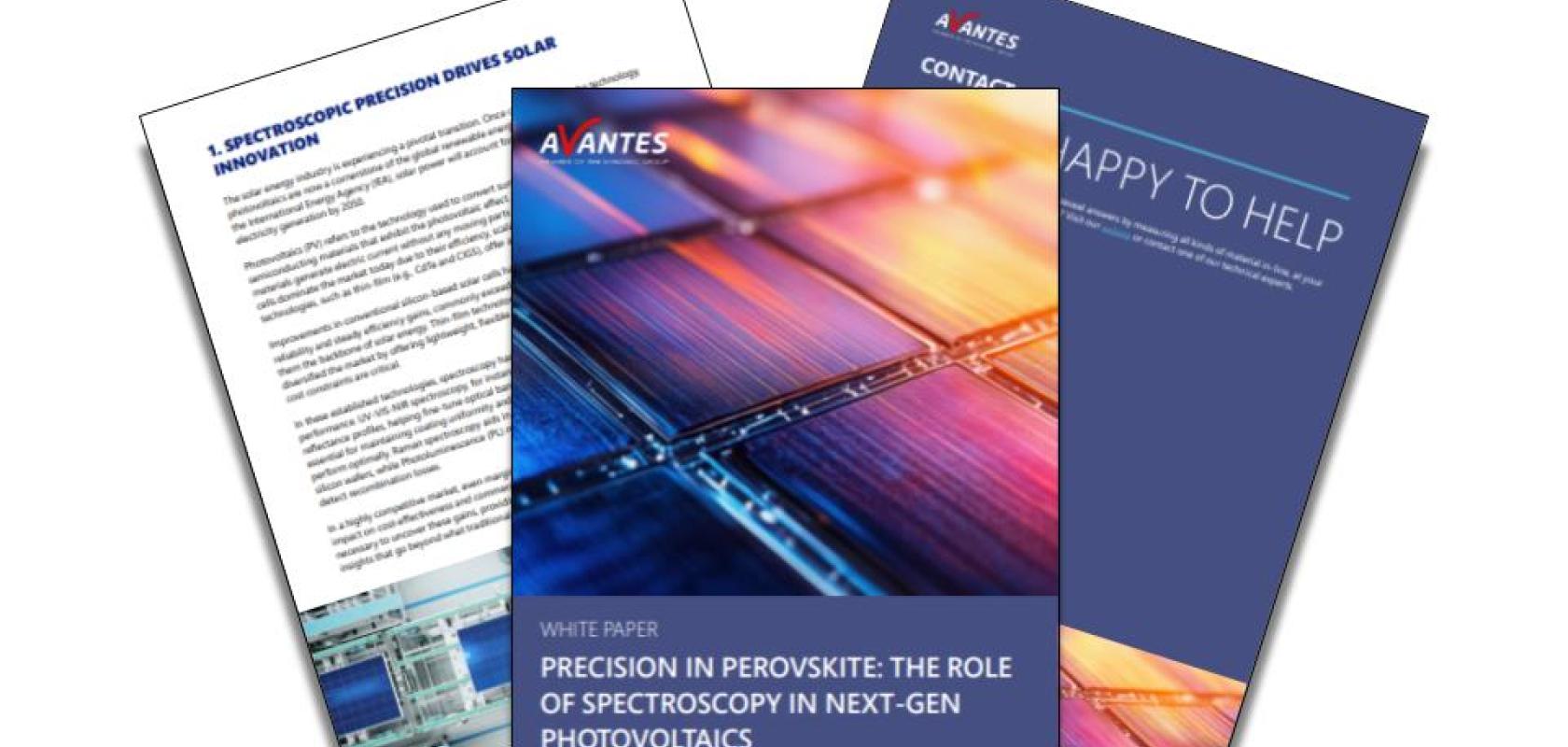Overcoming perovskite photovoltaic challenges with spectroscopy

Perovskite solar cells have emerged as a promising next-generation photovoltaic technology, achieving remarkable efficiency gains in just over a decade of development. However, the path from laboratory breakthrough to commercial deployment faces a number of obstacles. Issues with material stability, device reproducibility, and manufacturing scalability have prevented perovskite photovoltaics from achieving more widespread market adoption.
These challenges require sophisticated analytical tools to understand and overcome the fundamental material and device limitations.
Spectroscopy has proven invaluable in addressing these critical challenges, providing researchers and manufacturers with the precise analytical capabilities needed to characterise perovskite materials, optimise device performance, and ensure consistent quality in production environments.
This White Paper details how spectroscopy techniques help overcome challenges in perovskite photovoltaics, such as instability, variability, and scaling barriers, including insights from research and real-world applications.
Who should read this White Paper?
- Photovoltaic researchers and engineers
- Solar cell manufacturers (R&D and production teams)
- Academic institutions working on next-gen solar technologies
- Quality control and process optimization specialists in PV
What does this White Paper contain?
Insights include:
- How perovskite solar cells offer high efficiency and low-cost potential, but face instability, reproducibility, and scalability issues
- How spectroscopy provides real-time, non-destructive insight into material quality, layer uniformity, and defect detection
- Techniques such as: UV-VIS-NIR, photoluminescence (PL), quantum yield (QY), and in-situ thin-film monitoring
Why download this White Paper?
- You can learn how spectroscopy addresses critical perovskite PV challenges
- Benefit from real-life use case from leading research institutions and peer-reviewed studies
- Gain practical insights into integrating spectroscopy in both R&D and production

